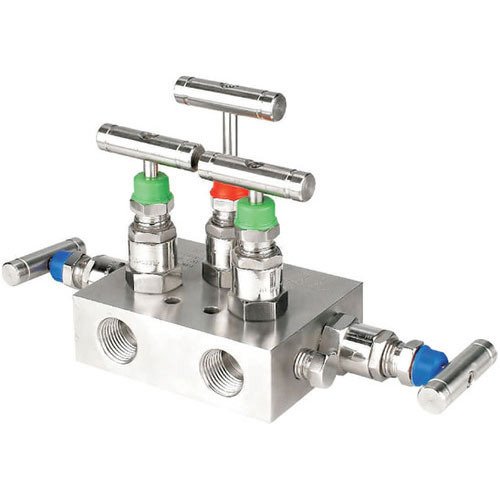Manifold valves play a vital role in modern industrial systems, providing efficient flow control, isolation, and safety. These valves are designed to manage the distribution and regulation of liquids or gases in pipelines, making them indispensable in sectors like oil and gas, chemical processing, power generation, and instrumentation systems.
By consolidating multiple valve functions into a single assembly, manifold valves simplify complex piping networks, improve space utilization, and reduce maintenance efforts. This guide explores the different types of manifold valves, their working principles, applications, and the importance of selecting a reliable manufacturer.
What Are Manifold Valves?
A manifold valve is an assembly of valves designed to control the flow of fluids between multiple channels. They allow operators to isolate, regulate, and vent process fluids efficiently. These valves are often fabricated from durable materials such as stainless steel, carbon steel, or alloy metals to withstand high-pressure and corrosive environments.
Manifold valves are widely used in instrumentation systems, high-pressure pipelines, and chemical processes where precise fluid control is critical. They reduce leakage points, simplify installation, and allow easier maintenance compared to installing individual valves for each line.
Common Types of Manifold Valves
Manifold valves come in various types depending on the specific requirements of the industrial application. The most widely used types include:
1. Double Block and Bleed (DBB) Valves
Double Block and Bleed valves feature two block valves and a bleed valve in a single body. The primary function is to isolate a section of a pipeline completely while safely venting any trapped fluid between the block valves.
Benefits:
-
Ensures complete isolation for safe maintenance
-
Reduces leakage risks
-
Minimizes downtime during inspections
Applications:
-
Oil and gas pipelines
-
Refinery processes
-
High-pressure hydraulic systems
2. Single Block and Bleed (SBB) Valves
Single Block and Bleed valves consist of one block valve and one bleed valve. They are ideal for moderate-pressure systems and applications where double isolation is not required.
Benefits:
-
Cost-effective and space-saving
-
Simple operation and maintenance
-
Suitable for moderate-pressure pipelines
Applications:
-
Instrumentation and measurement lines
-
Gas and liquid distribution systems
-
Process monitoring systems
3. Three-Valve Manifold Valves
Three-valve manifolds are primarily used with differential pressure transmitters. They include two block valves and one equalizing valve, enabling precise measurement without interrupting the process.
Benefits:
-
Accurate differential pressure measurement
-
Protects instruments from high-pressure spikes
-
Facilitates system calibration without shutdown
Applications:
-
Flow measurement systems
-
Pressure and level transmitters
-
Industrial instrumentation
4. Five-Valve Manifold Valves
Five-valve manifolds are more complex assemblies, consisting of two block valves, two equalizing valves, and one vent valve. They provide maximum operational flexibility and are commonly used in high-precision measurement systems.
Benefits:
-
Enables calibration and maintenance without process disruption
-
Enhances measurement accuracy
-
Reduces operational risks in critical processes
Applications:
-
Gas and liquid metering systems
-
High-pressure chemical processes
-
Process control instrumentation
How Manifold Valves Work
Manifold valves operate on a simple principle of fluid control and isolation. Their main functions include:
-
Isolation: Block the flow of liquids or gases to specific parts of the system.
-
Regulation: Control and balance the flow for accurate process monitoring.
-
Bleeding or Venting: Release trapped air, gas, or liquids to maintain system equilibrium.
In a double block and bleed valve, the primary block valve isolates the flow, the secondary block valve provides redundancy, and the bleed valve vents any remaining fluid, ensuring safety and operational efficiency. Manifold valves can be operated manually using handwheels or levers, or automatically through pneumatic or electric actuators.
Industrial Applications of Manifold Valves
Manifold valves are versatile components used across many industries for safety, control, and efficiency.
1. Oil and Gas Industry
Manifold valves are essential in controlling high-pressure pipelines, isolating wellheads, and enabling safe venting during maintenance or calibration. They are crucial in refineries, metering stations, and offshore platforms.
2. Chemical and Petrochemical Plants
In chemical processes, manifold valves manage corrosive fluids, regulate complex piping networks, and isolate instrumentation for maintenance without halting production.
3. Power Plants
Steam, water, and fuel systems in power plants depend on manifold valves for efficient control, maintenance, and safety. These valves ensure smooth operation in high-pressure environments.
4. Water and Wastewater Treatment
Manifold valves are used in filtration, chemical dosing, and distribution systems. They help maintain consistent water flow, prevent contamination, and allow safe maintenance.
5. Instrumentation Systems
Differential pressure transmitters, flow meters, and level sensors require manifold valves to isolate instruments for calibration and protect them from pressure surges.
Advantages of Manifold Valves
Investing in high-quality manifold valves offers several benefits:
-
Safety: Reduces the risk of leaks and accidents in high-pressure systems.
-
Compact Design: Combines multiple valves into a single assembly, saving space.
-
Cost-Effective: Lowers installation and maintenance costs.
-
Durability: Built from corrosion-resistant metals to handle harsh environments.
-
Flexibility: Provides precise control, isolation, and venting in diverse applications.
Choosing a Reliable Manifold Valve Manufacturer
Selecting a trusted manifold valve manufacturer ensures safety, durability, and efficiency. Key considerations include:
-
Material Quality: Stainless steel, carbon steel, and alloy metals for strength and corrosion resistance.
-
Compliance: Valves should meet international standards like API, ANSI, and ISO.
-
Customization: Manufacturers offering tailored solutions can meet unique process requirements.
-
Support: Reliable after-sales service and spare part availability are critical for uninterrupted operations.
Conclusion
Manifold valves are indispensable in modern industrial systems, offering reliable flow control, isolation, and safety. From double block and bleed valves in oil refineries to three-valve manifolds for differential pressure measurement, these valves improve operational efficiency, reduce maintenance downtime, and enhance process safety.







